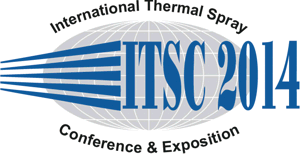
|
| Abstract No.: |
|
| Title: |
Microstructure and properties of suspension plasma sprayed SrTiO3 -based anodes for intermediate-temperature solid oxide fuel cells
|
|
| Authors: |
Chang-Jiu Li* / Xi'an Jiaotong University, P.R. China
Shan-Lin Zhang / State Key Laboratory for Mechanical Behavior of Materials, Xi'an Jiaotong University, China
Cheng-Xin Li/ State Key Laboratory for Mechanical Behavior of Materials, Xi'an Jiaotong University, China
Guan-Jun Yang/ State Key Laboratory for Mechanical Behavior of Materials, Xi'an Jiaotong University, China
|
|
| Abstract: |
Lanthanum doped strontium titanate (LST) is considered as a promising, redox-stable perovskite material for direct hydrocarbon oxidation anodes in intermediate-temperature solid oxide fuel cells (IT-SOFCs). In this study, the nano-sized LST and SDC (samarium doped ceria) powders are produced by sol-gel method and glycine-nitrate process, respectively. LST and LST/SDC composite anodes were prepared by suspension plasma spraying (SPS). The influences of SPS parameters on the microstructure of LST and LST/SDC coatings were investigated. The effects of annealing conditions on the phase structure and chemical stability of LST/SDC anodes were examined. The XRD results indicate that the suspension plasma-sprayed LST and LST/SDC coatings present the same phase structure with original powders. LST exhibits a good chemical compatibility with SDC. The coatings present a porous nanostructure which benefit high necessary gas permeability and long three phase boundary for the anode reaction. The test of the single cell which is assembled with LST/SDC anode, La0.8Sr0.2Ga0.8Mg0.2O3 electrolyte and La0.8Sr0.2CoO3 cathode showed a high performance at 600-800oC both in H2 and CH4 fuels. Moreover, the result indicates that the LST-based anode exhibits the good tolerance to carbon-induced deactivation in the internal utilization of hydrocarbon fuels.
|
|
